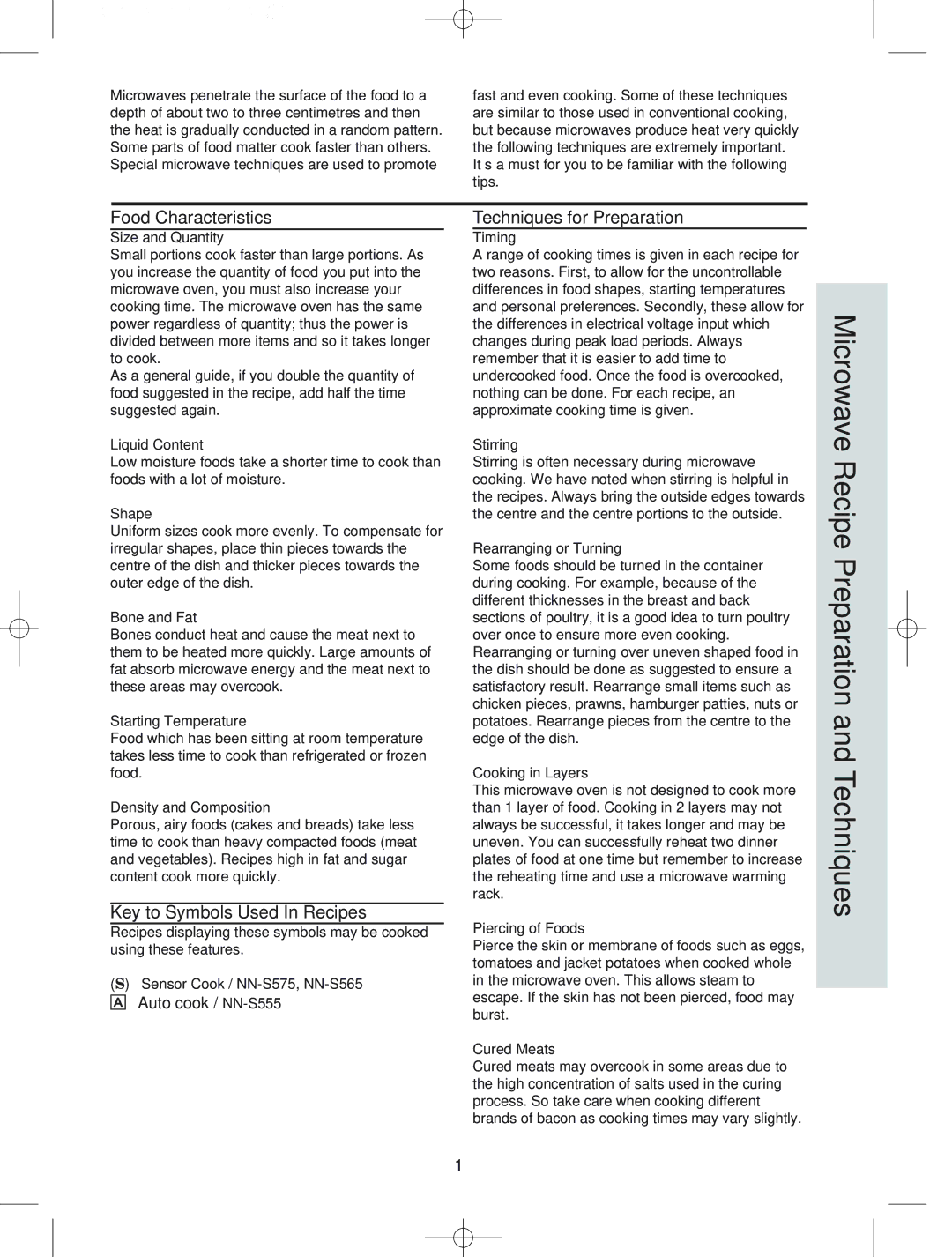NN-S565, NN-S555, NN-S575 specifications
The Panasonic NN-S575, NN-S565, and NN-S555 are part of Panasonic's innovative line of microwaves, designed to enhance cooking efficiency while bringing modern technology to your kitchen. Each model boasts impressive features that cater to various cooking needs, making them popular choices for home chefs.The NN-S575 is equipped with inverter technology, a hallmark of Panasonic’s microwaves that ensures even cooking throughout. This technology allows for precise temperature control, eliminating cold spots and ensuring that food is evenly heated. The NN-S575 also includes a powerful 1250-watt output, making it incredibly fast and efficient for reheating meals or defrosting. One of its standout features is the Genius Sensor, which automatically adjusts cooking time and power based on the moisture content of the food. This means users can simply place their meal inside, select the cooking program, and let the microwave do the rest.
Moving on to the NN-S565, this model also features inverter technology but comes with a slightly lower wattage of 1000 watts. The intuitive touch control panel allows for easy operation, and it is designed with multiple preset cooking options that make meal preparation effortless. The NN-S565 is particularly noted for its sleek design, which fits seamlessly into modern kitchens. Its compact size is perfect for smaller spaces without compromising on performance.
The NN-S555 model is the more budget-friendly option in this lineup, maintaining much of the same core technology as its counterparts. It offers a 900-watt output and is also equipped with inverter technology, which ensures a consistent cooking experience. Although it has fewer preset functions compared to the NN-S575 and NN-S565, it still provides essential capabilities that make it suitable for everyday microwave tasks. The simplicity of the NN-S555 appeals to users looking for straightforward functionality without the need for advanced features.
All three models feature a stylish design, with a smooth glass door and a modern stainless-steel finish. They are designed for easy cleaning and have spacious interiors that accommodate a variety of dishes. Key safety features, such as child lock mechanisms, are also integrated into the design, ensuring peace of mind for families.
In summary, whether you choose the NN-S575, NN-S565, or NN-S555, you are investing in high-quality microwave technology from Panasonic. Each model caters to different preferences and cooking requirements, ensuring that there is an option for everyone looking to enhance their culinary experience.

